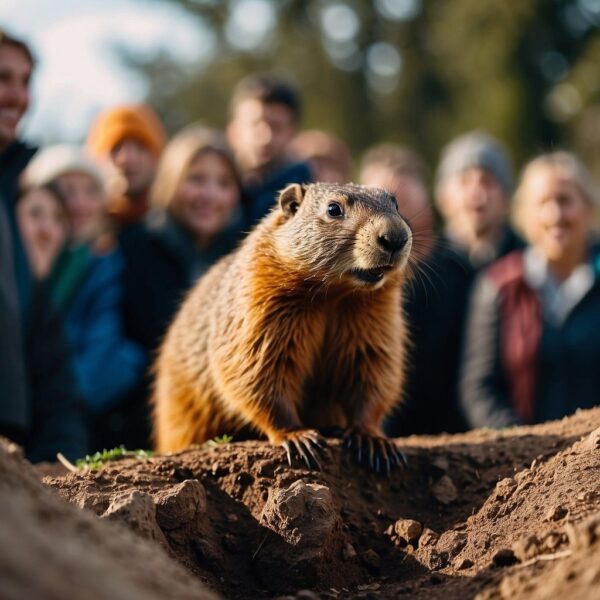
Groundhog Day Traditions: Exploring the Cultural Significance
Groundhog Day is an annual tradition celebrated in the United States and Canada on February 2. Stemming from Pennsylvania Dutch superstition, the holiday centers on the behavior of a groundhog emerging from their burrow. It’s believed that if the groundhog sees its shadow due to clear weather, it will retreat back into its den, heralding six more weeks of winter; if it does not see its shadow because of cloudiness, an early spring is expected.
The concept of Groundhog Day has roots in ancient traditions that were used to predict weather patterns, notably aligning with Candlemas. Over time, these traditions evolved into the specific focus on the groundhog as a meteorological prognosticator. The holiday has since been enshrined in North American culture with Punxsutawney, Pennsylvania’s Punxsutawney Phil, becoming the most famous groundhog forecaster.
Key Takeaways
- Groundhog Day is a weather-predicting tradition on February 2 that hinges on a groundhog’s shadow.
- The holiday is a product of both age-old weather lore and specific North American cultural practices.
- While grounded in superstition, the event has significant cultural standing and has even inspired a popular film.
Historical Origins and Evolution
This section explores the transformation of Groundhog Day from its ancient religious origins to the culturally significant event it is today in North America, particularly centered around Punxsutawney, Pennsylvania.
Ancient Roots and Religious Significance
Groundhog Day can trace its historical roots back to early European traditions and religious ceremonies. Specifically, the festival of Imbolc, a Celtic tradition celebrated on February 1st, marked the beginning of spring. Imbolc occurs halfway between the winter solstice and the spring equinox, symbolizing the awakening of life after winter. This tradition merged with Christian customs as Candlemas Day, observed on February 2, was established to celebrate the purification of the Virgin Mary, forty days after Christmas. On Candlemas, the clergy would bless and distribute candles for the people to use during the remaining dark winter days. An old European rhyme captured the tradition’s weather prediction element: “If Candlemas be fair and bright, / Come, Winter, have another flight; / If Candlemas brings clouds and rain, / Go Winter, and come not again.”
From Europe to North America
The practice of using an animal to predict the coming of spring was brought to North America by European immigrants, predominantly the German and French. The Pennsylvania Dutch, a cultural group of German immigrants in Pennsylvania, adapted their Germanic tradition of forecasting the weather with a badger or a bear on Candlemas Day. When these immigrants settled in Pennsylvania, they found that the region had an abundance of groundhogs and began to use this local animal to continue their forecasting tradition.
The Punxsutawney Tradition Begins
The first official Groundhog Day celebration in the United States occurred on February 2, 1887, in Punxsutawney, Pennsylvania. This event was spearheaded by a group of local businessmen and woodchuck hunters known as the Punxsutawney Groundhog Club. They proclaimed a local rodent named Punxsutawney Phil as the official weather-predicting groundhog. According to the tradition, if Phil emerges from his burrow and sees his shadow, it indicates six more weeks of winter; if not, it suggests an early spring. The tradition has since become an annual event that draws crowds and media attention, evolving from its European origins into a distinct aspect of American culture.
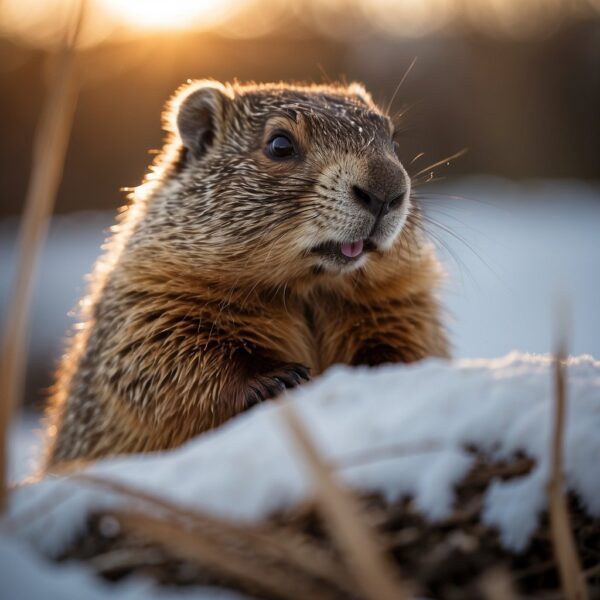
Groundhog Day Celebration
Each year on February 2, the small town of Punxsutawney, Pennsylvania, becomes the center of attention as thousands of visitors gather at Gobbler’s Knob to witness Punxsutawney Phil, the famed groundhog, predict the weather.
Punxsutawney Phil as the Prognosticator
Punxsutawney Phil is the legendary woodchuck known for his weather prediction ritual. According to tradition, if Phil emerges from his burrow and sees his shadow, there will be six more weeks of winter; if he does not, an early spring is expected. This quirky custom has cemented Phil as a cultural icon in the United States.
Festivities and Customs
Groundhog Day festivities span beyond the main event of Phil’s prognostication. Visitors often enjoy a variety of activities such as:
- Live entertainment: Performances and music are part of the day’s enjoyment.
- Souvenirs: Booths and kiosks sell memorabilia celebrating Punxsutawney Phil and the Groundhog Day tradition.
These customs contribute to the event’s growing popularity and ensure the celebration is a memorable experience.
The Inner Circle and Ceremonies
The Punxsutawney Groundhog Club’s Inner Circle, a group adorned in top hats and tuxedos, is responsible for planning the festivities and caring for Phil year-round. The ceremonies they conduct are conducted with a blend of ceremony and tongue-in-cheek humor, and they play a crucial role in maintaining the lore of Groundhog Day and overseeing the day’s celebrated activities at Gobbler’s Knob.
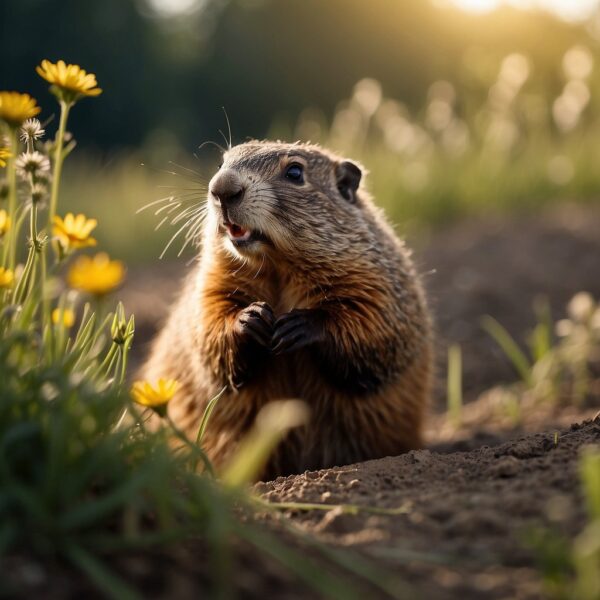
Scientific Explanation and Cultural Impact
Groundhog Day intertwines folklore with meteorological observations, while its cultural impact extends into widespread traditions and media portrayals, reflecting its significance in the United States.
Animal Behavior and Meteorology
Groundhog Day is predicated on the belief that the animal’s behavior can predict the weather, specifically the arrival of spring. On February 2, if a groundhog, like Punxsutawney Phil, emerges and sees its shadow, it supposedly signifies six more weeks of winter—a sunny day. No shadow suggests an early spring—a cloudy day. Experts note that this is not a scientific method for weather forecasting; the behavior of a groundhog is not a reliable indicator of weather patterns. Studies in meteorology and climate suggest that changes in weather depend on a complex interplay of atmospheric conditions and are not accurately foretold by animal behavior.
Cultural Significance in the United States
The tradition of Groundhog Day has its origins in Pennsylvania in the 1800s, with the first official celebration recorded in 1887. It has strong connections to pre-Christian traditions and was integrated into local customs by immigrants. Every year, the event attracts attention across the nation, with Punxsutawney, Pennsylvania, as the focal point for festivities. This celebration has become a part of American cultural heritage, marking a point mid-way between the winter solstice and spring equinox, in what some refer to as a “cross-quarter day”.
Media Representations and Adaptations
Groundhog Day has transcended its cultural roots to become an oft-used trope in media. The most notable example is the 1993 film “Groundhog Day,” in which a weatherman relives the same day repeatedly. This film has greatly influenced public perceptions of the day and has been acknowledged in various other forms of media, contributing to the holiday’s continued relevance. The recurrence of Groundhog Day themes in media has cemented its place as a symbol of repetition and reflection in popular culture.
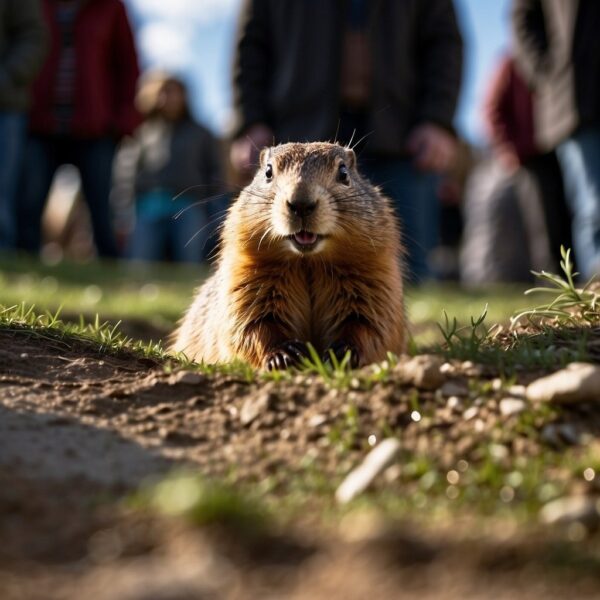
Groundhog Day in Popular Culture
Groundhog Day’s reach extends far beyond its origins, permeating various corners of popular culture, most notably through film and television.
The Bill Murray Film Impact
“Groundhog Day” (1993) stands as a cultural landmark in cinematic history. Starring Bill Murray alongside Andie MacDowell, the movie showcases a weatherman trapped in a time loop, reliving the same day repeatedly. Its mixture of comedy and philosophical themes turned it into a critical and commercial success. The film not only popularized the term “Groundhog Day” as a metaphor for repetitive situations but also cemented the holiday as a point of reference in American pop culture.
- Release Year: 1993
- Lead Actor: Bill Murray
- Co-Star: Andie MacDowell
- Genre: Comedy
- Cultural Impact: Coined the term “Groundhog Day” to describe déjà vu experiences
Broader Media References and Uses
Beyond the silver screen, references to Groundhog Day appear across television and other media platforms, further demonstrating the movie’s influence on its representation in popular culture. These references often play on the film’s time loop concept, serving as a plot device that characters must navigate. The holiday itself, alongside its associated customs and the concept of time loops, has been featured in various TV shows, indicating its popularity and lasting relevance in media discussions surrounding themes of fate and destiny.
Local Celebrations and Global Observations
Groundhog Day is a widely recognized tradition with various regional celebrations predominantly in North America, each featuring their own furry weather prognosticator.
Regional Groundhog Predictors
- Punxsutawney, Pennsylvania: Each year, thousands flock to Gobbler’s Knob in Punxsutawney to witness the most famous groundhog, Punxsutawney Phil, make his weather prediction. This event, which dates back to 1887, is at the heart of Groundhog Day’s historical celebrations.
- Staten Island Chuck: New York City looks to Staten Island Chuck, a local celebrity groundhog residing at the Staten Island Zoo, known for his own set of weather forecasts.
- Woodstock Willie: In Illinois, the city of Woodstock, made famous for its association with the movie “Groundhog Day,” relies on Woodstock Willie to add a Midwestern touch to the tradition.
Similar Traditions Around the World
- Canada: Canada participates in Groundhog Day with several regional groundhogs, such as Wiarton Willie in Ontario, and Shubenacadie Sam in Nova Scotia. Each groundhog brings a local flavor to the day’s rituals.
- Other Animal Forecasters: Although not related to Groundhog Day, various cultures have their own animal forecasters. For instance, some European traditions included animals like the badger in similar roles, signaling the continuation or end of winter based on their behavior.
Throughout these celebrations, candles and other symbols of light and warmth hold a significant place, echoing the origins of Groundhog Day from Candlemas. This blending of meteorological folklore with entertainment keeps the tradition alive both locally and globally.
Impact on Society
Groundhog Day influences various aspects of society, from stimulating local economies through tourism to affecting cultural beliefs about meteorological science and integrating into the collective customs of a community.
Tourism and Economic Factors
Punxsutawney, Pennsylvania, has experienced a significant boost in tourism due to Groundhog Day festivities, with thousands of visitors flocking to the town annually. The event generates substantial economic benefits for local businesses through the sale of merchandise, increased hospitality services, and media attention.
- Visitors: Over 20,000 annually
- Revenue: Significant, especially for small businesses
Weather Prediction and Trust in Science
The tradition of using a groundhog’s shadow to predict the weather has stirred a friendly relationship between folklore and meteorological science. While the accuracy of the predictions is debated among experts, Groundhog Day has maintained its cultural significance as a lighthearted approach to weather forecasting, rather than a scientifically robust method.
- Predictive Accuracy: Contradictory studies, with some suggesting no significant correlation to weather patterns
- Experts’ View: More symbolic than scientific
Acculturation and Integration into Society
Groundhog Day reflects the integration of Pennsylvania German settlers’ traditions with North American culture. The celebration has transcended its roots to become a part of American societal norms, demonstrating the assimilation and adaptation of immigrant cultural practices within a broader cultural context.
- Cultural Significance: Seen as a reflection of American society’s openness to varied customs
- Tradition’s Origin: Pennsylvania German immigrants’ celebration of Candlemas Day
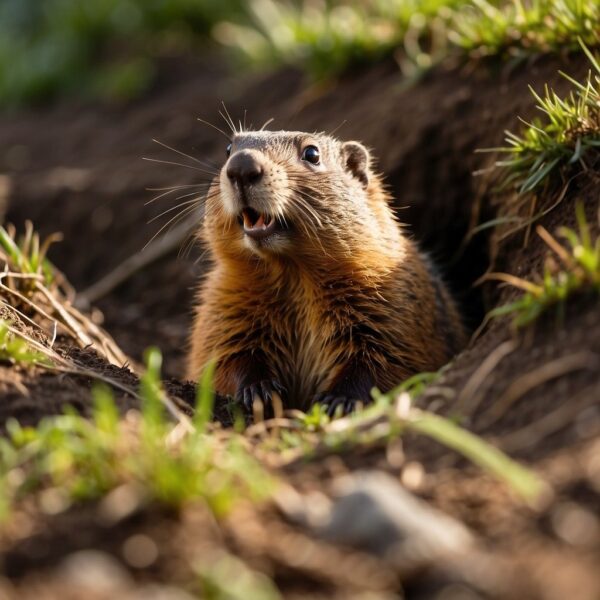
Frequently Asked Questions
This section answers common queries about the “Groundhog Day” film, its related media, the titular holiday celebration, and the symbolism behind the groundhog’s shadow.
Who are the main actors in the film ‘Groundhog Day’?
The film ‘Groundhog Day’ features Bill Murray as the main actor, playing the character Phil Connors. Andie MacDowell co-stars as Rita, Phil’s love interest.
Can you suggest movies similar to ‘Groundhog Day’?
Movies similar to ‘Groundhog Day’ that explore themes of time loops and existential comedy include “About Time,” “Edge of Tomorrow,” and “Source Code.”
Which song is prominently featured in ‘Groundhog Day’?
The song “I Got You Babe” by Sonny and Cher is prominently featured in ‘Groundhog Day’, waking up the protagonist each morning.
How do people traditionally celebrate Groundhog Day?
Traditionally, Groundhog Day is celebrated by observing a groundhog emerging from its burrow. If the groundhog sees its shadow, it predicts six more weeks of winter; no shadow signifies an early spring.
What platforms offer the ‘Groundhog Day’ movie for streaming?
The movie ‘Groundhog Day’ is available for streaming on platforms such as Hulu, Amazon Prime, and Netflix, depending on the viewer’s location and the platform’s current library.
What does it signify if the groundhog sees its shadow?
If the groundhog sees its shadow on Groundhog Day, folklore says that it signifies six more weeks of winter weather.